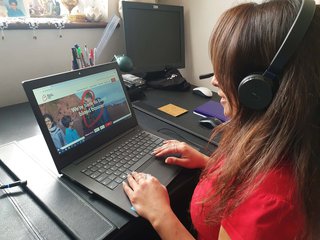Chronic LGLL symptoms and diagnosis
Both chronic T-LGLL and chronic NK-LGLL start to develop very slowly, meaning it can take a while for symptoms to show. Some people won't get any symptoms at all.
Symptoms of LGLL
In the early stages of LGLL, many people don’t have any symptoms, so chronic LGLL is sometimes diagnosed after having a routine blood test for something else.
As abnormal lymphocytes begin to build up in the bone marrow and blood, there gradually becomes less space for healthy blood cells. Having low levels of healthy cells can cause symptoms such as:
- Anaemia (from low levels of red blood cells), which can cause breathlessness, pale skin, and tiredness
- Bruising and bleeding easily (due to low levels of platelets)
- Frequent and persistent infections (due to low levels of functioning white blood cells)
- A high temperature
- Feeling generally unwell, including extreme tiredness and weight loss
- A swollen spleen, which might feel like a sense of fullness or discomfort in the upper left abdomen (this is caused by abnormal blood cells building up in the spleen).
If you have the symptoms above, it’s a good idea to make an appointment with your GP. While many of the symptoms are usually explained by something else that isn’t cancer, it’s important to see a doctor to make sure.
Diagnosing chronic LGLL
To make a diagnosis of LGLL, doctors are looking for:
- Increased levels of lymphocytes (abnormal T-cells or NK-cells) that have been raised for more than six months
- Certain proteins (known as CD proteins) on the surface of lymphocytes, which indicates leukaemia
- Evidence of “clonality,” which means the lymphocytes all look the same. This is a sign of leukaemia, because it shows that one specific cell type is cloning itself and multiplying out of control.
The doctor will also ask about your symptoms and take a sample of your blood (and sometimes bone marrow) to run tests on. These tests include:
Doctors will take a sample of your blood to identify how many blood cells of each type you have in the blood. Taking a sample is a relatively quick procedure where a doctor inserts a small needle into your vein and takes a small amount of blood. Your sample will then be sent to a laboratory, where a haematologist (a professional that specialises in blood and bone disorders) will do a “full blood count.”
This counts how many platelets, red blood cells, and different types of white blood cell are in your body. The test shows whether you have an increase in abnormal T-cells or NK-cells in your blood. You might have several blood tests to look at your full blood count over time.
Doctors will also look at your blood sample under a microscope (known as a “blood smear”) to look for any abnormal cells. If you are diagnosed with LGLL, you will have regular FBC tests throughout your treatment to monitor you.
Immunophenotyping is a method used to look at certain proteins called CD proteins on the surface of cells. Healthy white blood cells have typical CD proteins present, but cancer cells normally have an irregular pattern of CD proteins on the surface.
Immunophenotyping is done on your blood sample. By looking for CD proteins, the test can count the number of leukaemia cells and normal cells in your blood. It can also check whether you have T-LGLL or NK-LGLL.
Like all types of cancer, LGLL happens when something goes wrong in the DNA inside your blood cells. Most people with LGLL have genetic changes (mutations) in the LGLL cells. These changes happen during your life, they are not inherited from your parents and can’t be passed down to children.
Tests can be done on a sample of your blood or bone marrow to look for these changes. The most common genetic changes are called STAT3, STAT5B and TNFAIP3. If these are found, it can confirm a diagnosis of LGLL.
Another form of genetic testing is TCR gene analysis, which looks for how different or similar your T-cell lymphocytes are. Normally, there are genetic differences between T-cell lymphocytes – this allows your immune system to have a diverse range of cells to fight infections. But in LGLL, many T-lymphocytes can be genetically identical. This suggests clonality - it shows that one specific cell type is cloning itself and multiplying out of control. This test can help diagnose T-LGLL
Doctors may take a sample of your bone marrow to be analysed. This is called a biopsy and involves a doctor using a needle to get a sample of bone marrow from your hip.
The sample is then looked at under a microscope, where specialists will identify any abnormal cells. This can help to confirm a diagnosis.
Some people find the bone marrow biopsy uncomfortable, others find it painful, and some people say they don’t feel much. Your team will be there to provide you with support and pain relief, as well as answer any questions you might have about the procedure. It normally takes 1-2 weeks to get the results of a bone marrow biopsy. We have more information about bone marrow biopsies.

Having tests for blood cancer?
We're here to answer your questions or talk about how you're feeling. Contact our Support Service today.
